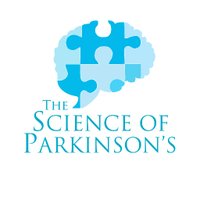
Bronte-Stewart Lab
@hbslab
Investigating neural and kinematic signatures of movement using synchronous neural and kinematic recordings in freely moving human, Parkinson's Disease patients
ID: 1054883841725198336
http://med.stanford.edu/bronte-stewart-lab.html 23-10-2018 23:54:41
44 Tweet
251 Followers
19 Following

We are currently hiring for 3 new positions! Seeking a post-doc and 2 RAs interested in decoding the pathophysiology of #movementdisorders. Please see med.stanford.edu/bronte-stewart… for details and to apply! Stanford Neurology & Neurological Sciences




96 individuals with Parkinson's Disease performed a 30 second QDG-RAFT task to reliably track disease progression and cardinal motor symptoms, including rigidity. Learn more here! pubmed.ncbi.nlm.nih.gov/35694934/ Stanford Neurology & Neurological Sciences


The Human Motor Control and Neuromodulation Lab under Dr. Bronte-Stewart Bronte-Stewart Lab is seeking a neural engineering postdoctoral scholar to investigate neural closed loop deep brain stimulation in Parkinson’s disease. Learn more and apply: med.stanford.edu/bronte-stewart…


We are currently recruiting new Research Assistants to participate in cutting-edge research in #ParkinsonsDisease! Please apply here for more information: careersearch.stanford.edu/jobs/research-… Stanford Neurology & Neurological Sciences

New paper from the lab! Higher interhemispheric STN beta coherence correlates with worsening bradykinesia and disease progression, unlike local STN beta dynamics. onlinelibrary.wiley.com/doi/10.1002/an… Stanford Neurology & Neurological Sciences


Discover more about the future of movement disorders here with Dr. Helen Bronte-Stewart: youtube.com/watch?v=wmv06q… Stanford Neurology & Neurological Sciences


Interested in participating in adaptive Deep Brain Stimulation research and have Medtronic's Percept PC device? Contact us at [email protected]! #ParkinsonsDisease #aDBS Stanford Neurology & Neurological Sciences


Hope vs. Hype: Will closed loop technology provide more meaningful improvement compared to directional leads in deep brain stimulation? New discussion piece from Bronte-Stewart Lab & Aristide Merola prd-journal.com/article/S1353-…

[DBS study of Parkinson’s disease] Shreve et al.: “Parkinson’s neural oscillations and coupling were greater in the more affected subthalamic nucleus and were evident in 98% cases.” doi.org/10.1016/j.clin… Stanford Neurology & Neurological Sciences #DBS #STN #PD #ClinicalNeuroph
![IFCN and its Clinical Neurophysiology journals (@clinicalneuroph) on Twitter photo [DBS study of Parkinson’s disease] Shreve et al.: “Parkinson’s neural oscillations and coupling were greater in the more affected subthalamic nucleus and were evident in 98% cases.”
doi.org/10.1016/j.clin…
<a href="/Stanford_Neuro/">Stanford Neurology & Neurological Sciences</a>
#DBS #STN #PD #ClinicalNeuroph [DBS study of Parkinson’s disease] Shreve et al.: “Parkinson’s neural oscillations and coupling were greater in the more affected subthalamic nucleus and were evident in 98% cases.”
doi.org/10.1016/j.clin…
<a href="/Stanford_Neuro/">Stanford Neurology & Neurological Sciences</a>
#DBS #STN #PD #ClinicalNeuroph](https://pbs.twimg.com/media/FzyehdDWcAA2ivA.png)

